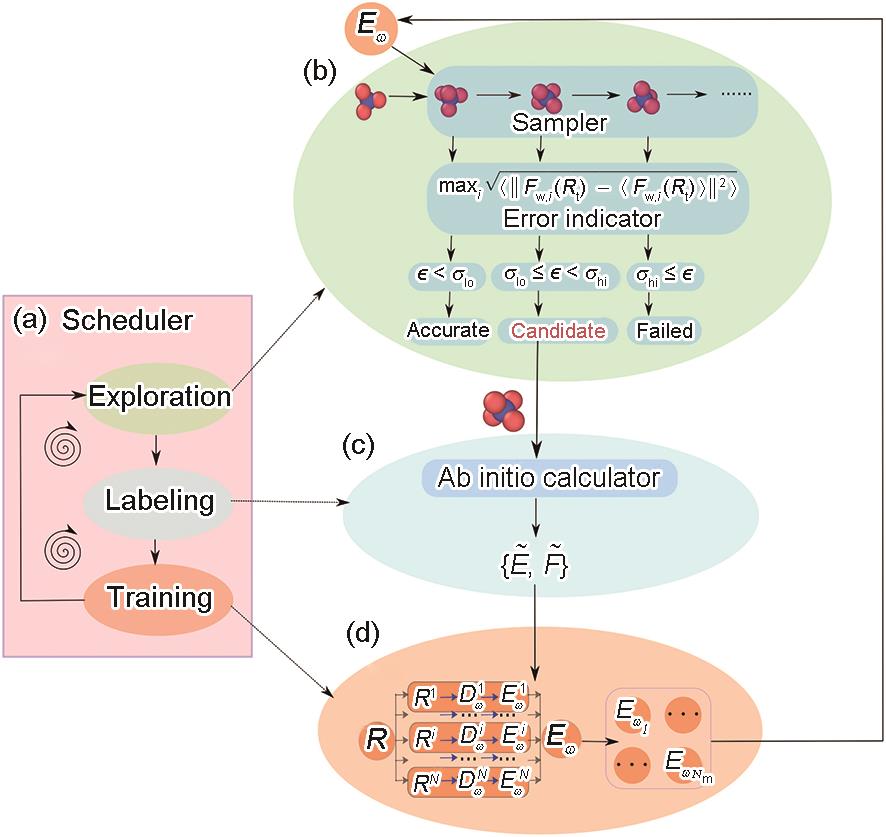机器学习势在铁电材料研究中的应用
Application of Machine Learning Force Fields for Modeling Ferroelectric Materials
(a) the exploration, labeling, and training steps in the iterative procedure; the deep potential molecular dynamics (DPMD)-based explora-tion strategy is used here as an example. The molecular dynamics simulation is driven by an ensemble of DP models given an initial structure, and a series of conforma-tions are sampled
(b) for each configuration, the maximum deviation from the atomic force, defined as the error metric ϵ, is predicted by the DP model ensemble. σhi and σlo are the upper and lower bounds of the trust levels, respectively. Fw,i (Rt) denotes the force on the atom with index i predicted by the model Eω, and Nm denotes the number of atoms
(c) labeling is performed, and first-principles cal-culations are employed to obtain the energies and forces of the candidate structures,
(d) based on the accumulated training set, a new DP model ensemble is generated and passed to the next iteration
